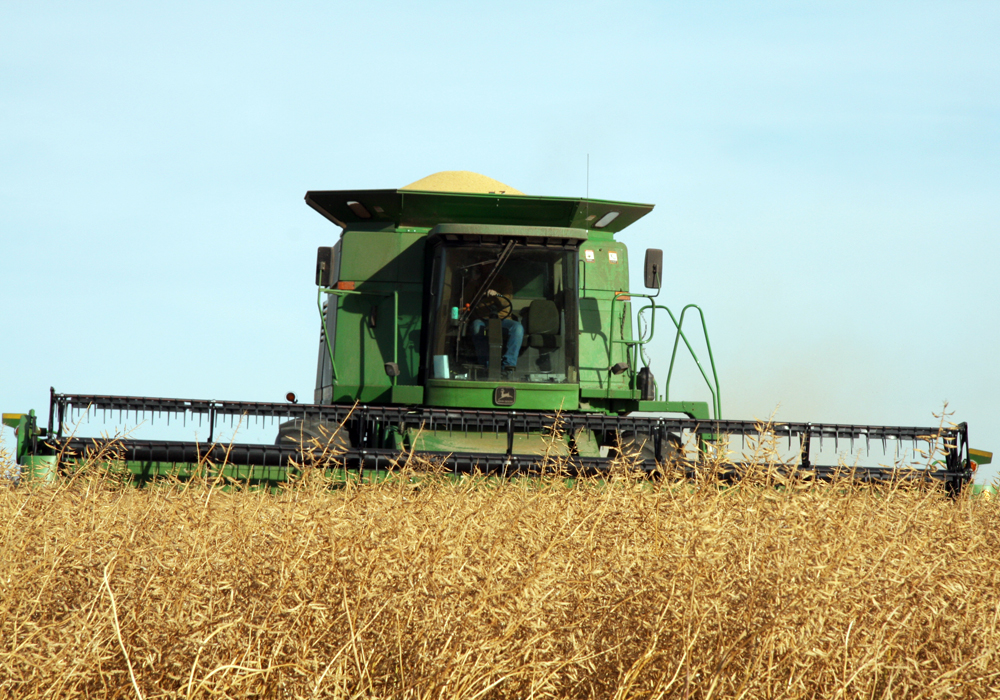Prairie mustard growers are beginning to see big changes in their industry, thanks to the introduction of the country’s first hybrid mustard variety, AAC Hybrid Brown 18.
The variety, developed by Agriculture Canada mustard breeder Bifeng Cheng at Ag Canada’s Saskatoon Research and Development Centre, is expected to be planted on nearly 30,000 prairie acres this year, or roughly 15 to 20 percent of total brown mustard plantings in Western Canada.
“This is a huge opportunity for our growers and our industry,” said Rick Mitzel, executive director of the Saskatchewan Mustard Development Commission (SaskMustard) and Mustard 21, which represents mustard growers across Canada.
Read Also

Farming Smarter receives financial boost from Alberta government for potato research
Farming Smarter near Lethbridge got a boost to its research equipment, thanks to the Alberta government’s increase in funding for research associations.
“AAC Hybrid Brown 18 has a 20 percent yield increase compared to open pollinated mustard varieties.”
That yield bump will allow prairie mustard growers to increase per acre returns and capture a larger share of world markets versus competing growers in Europe and other mustard exporting countries, Mitzel said.
As an added bonus, AAC Hybrid Brown 18 has nearly half as much erucic acid as open pollinated brown mustard varieties currently grown in Western Canada.
Brown mustards with lower erucic acid are preferred by diners in Europe, where the majority of the world’s processed brown mustard is consumed.
Seed size from AAC Hybrid Brown 18 is also larger and more consistent than existing open pollinated varieties, which will make it more appealing to processors.
In Saskatoon, Cheng is also working to develop hybrid lines of yellow and Oriental mustard, which are expected to offer similar yield increases.
Mitzel said the first hybrid Oriental from Cheng’s program is just around the corner, while the first hybrid yellow is a few years away from commercialization.
AAC Hybrid Brown 18 is the first hybrid variety to be commercially available in Canada.
It was grown in limited quantities last year and produced impressive results in Saskatchewan, even under less than ideal growing conditions, said Mitzel.
This year, seed supplies were more abundant, meaning hybrid brown acreage will likely increase significantly.
Seed is available through three distributors — Nutrien, Sundwall Seeds in Govan, Sask., and Mercer Seeds in Lethbridge — but demand has been steady and remaining supplies could be hard to come by.
“There’s a little bit of seed left but we’ve actually had a pretty good run on it so we have moved most of it.”
In a May 7 interview with The Western Producer, Mitzel said the introduction of hybrid mustard varieties in Canada is a ground-breaking development.
“It’s a step-up for farmers for sure,” he said.
“We’re seeing some nice yield increases from it — in the range of 20 percent — using the same treatments that growers have been using in the past with the open-pollinated mustards.
“What growers are finding too is that it’s coming out of the ground faster, they’re getting more leaf matter quicker and more root matter quicker, so it’s kind of the same evolution that the industry went through on the canola side, where there was such a big difference between the hybrids and the open pollinated varieties.
“We’re expecting that same kind of process to happen in mustard,” he said.
Trials are also being conducted in conjunction with Saskatchewan Agriculture to determine if more intensive fertility programs can be used to produce even higher yields.
The 20 percent yield bump associated with AAC Hybrid Brown 18 is based on standard fertility programs that are typically used on open pollinated varieties.
“We want to see what happens if you use even higher fertility levels. Can you push that yield increase even higher than 20 percent?” Mitzel said.
“Our guess is that you can. We started running these trials last year, but you know what the spring was like last year. We didn’t end up with really good plots at the end of the day, so there wasn’t enough data there to say anything. But we should have a better idea this spring if we have better conditions. And we certainly should because at this time last year, guys in that south country were seeding into dry dirt….”
Across Western Canada, total mustard plantings typically run in the range of 450,000 to 500,000 acres per year.
Of that, about 250,000 acres are sown to yellow varieties, approximately 180,000 acres are sown to brown and roughly 30,000 acres a year are sown to Oriental.
Most of the world’s brown mustard is consumed in Europe and the majority of what’s consumed in Europe is used in restaurants, particularly in France.
Mitzel said French imports of brown mustard fell off last month due to European restaurant closures and market disruptions caused by COVID-19.
Domestic prices for brown mustard are about 28 cents per pound, Mitzel said. Those are some of the lowest prices Canadian growers have seen in the past seven or eight years.


















